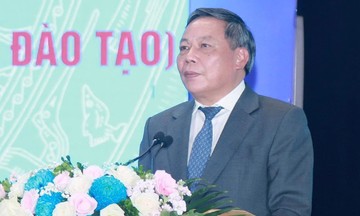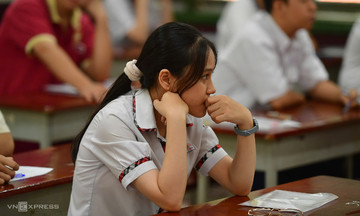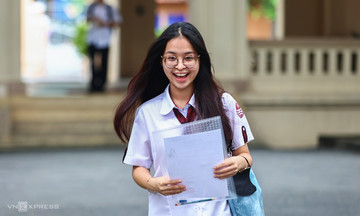The education sector views digital transformation as a lever for teaching and learning quality in this new development phase. A representative from the Tay Ninh Department of Education and Training said the locality has achieved initial success in digitalization and is entering an acceleration phase.
In management, almost all education management activities are now conducted online. Along with the support of large enterprises like Viettel and VNPT, the Department has implemented several applications such as the Education Sector Electronic Information Portal, School Management System, digital student records, and the IOC Education Operations Center. 100% of administrative procedures in the sector are carried out online, reducing time and costs for citizens, parents, students, and schools.
100% of primary schools have implemented digital student records. This solution is being piloted and expanded to upper secondary schools and vocational education. Currently, 20 lower secondary schools, 28 upper secondary schools, and 7 vocational and continuing education centers have adopted it. The Department representative stated that digital records reduce errors and printing costs in student data management compared to traditional records. Online data is also stored securely, permanently, and is easier to search.
 |
Students present with an interactive whiteboard. Photo: *Tay Ninh Department of Education and Training* |
All education sector data is synchronized with the Ministry's database and authenticated with the National Population Database. Schools also conduct periodic digital transformation assessments.
In addition, all schools implement cashless collection through VNPT Pay, Viettel Pay, and connected banking applications, synchronized with the school management system. Through this system, the education sector connects and interacts with parents on digital platforms like OTT, apps, and websites. Schools are also instructed to use the Eoffice and Tic Office management systems, connecting with the Department's Eoffice and Tic Office systems.
Instead of using traditional books, many schools flexibly apply interactive formats for e-books such as videos and images to make reading more beneficial.
The Department of Education, in collaboration with several units, also organizes training sessions on applying AI in teaching. Tools like ChatGPT, Copilot, and Gemini help teachers familiarize themselves with new teaching methods, where AI can assist in suggesting lesson plans and novel interactive formats to make learning more engaging. AI also supports teachers in brainstorming topics and converting text to speech to create multimedia lectures.
 |
The education sector pilots the IOC smart operating center. Photo: *Tay Ninh Department of Education and Training* |
According to Huynh Phuong Vu, Deputy Director of the Department of Education and Training, digital transformation is creating a new landscape for teaching activities where students receive better quality thanks to technology. Parents can also monitor and understand their children's learning situation better. For schools, digital transformation reduces paperwork processing time, giving teachers more time to invest in teaching quality.
"Digital transformation will continue to be a focus in the coming period as we hope technology will further improve the teaching and learning environment," Vu said.
As a teacher at Nguyen Thong Upper Secondary School, Tam Vu Commune, Nguyen Thi Tuyet Hang has directly experienced the support of technology. The school has invested heavily in interactive whiteboards and designed interactive lesson plans with the help of technology. Instead of teaching conventional knowledge, interactive lesson plans utilize various software, including AI, to design minigames and lesson paths that allow students to participate more. Students can acquire knowledge through games by dragging and dropping, and using a stylus with the interactive whiteboard.
"We teachers are trained and learn from each other to create more engaging lesson plans, encouraging connection with students instead of just lecturing and listening as in the traditional way," Tuyet Hang said.
While creating a new look for the sector, the Department representative acknowledges limitations that need to be addressed in the future. Some main limitations include asynchronous information technology infrastructure, a lack of specialized personnel for digital transformation in many educational institutions, and investment resources. These are also the key areas the education sector will improve in the coming period, especially as the new school year approaches.
Hoai Phuong












